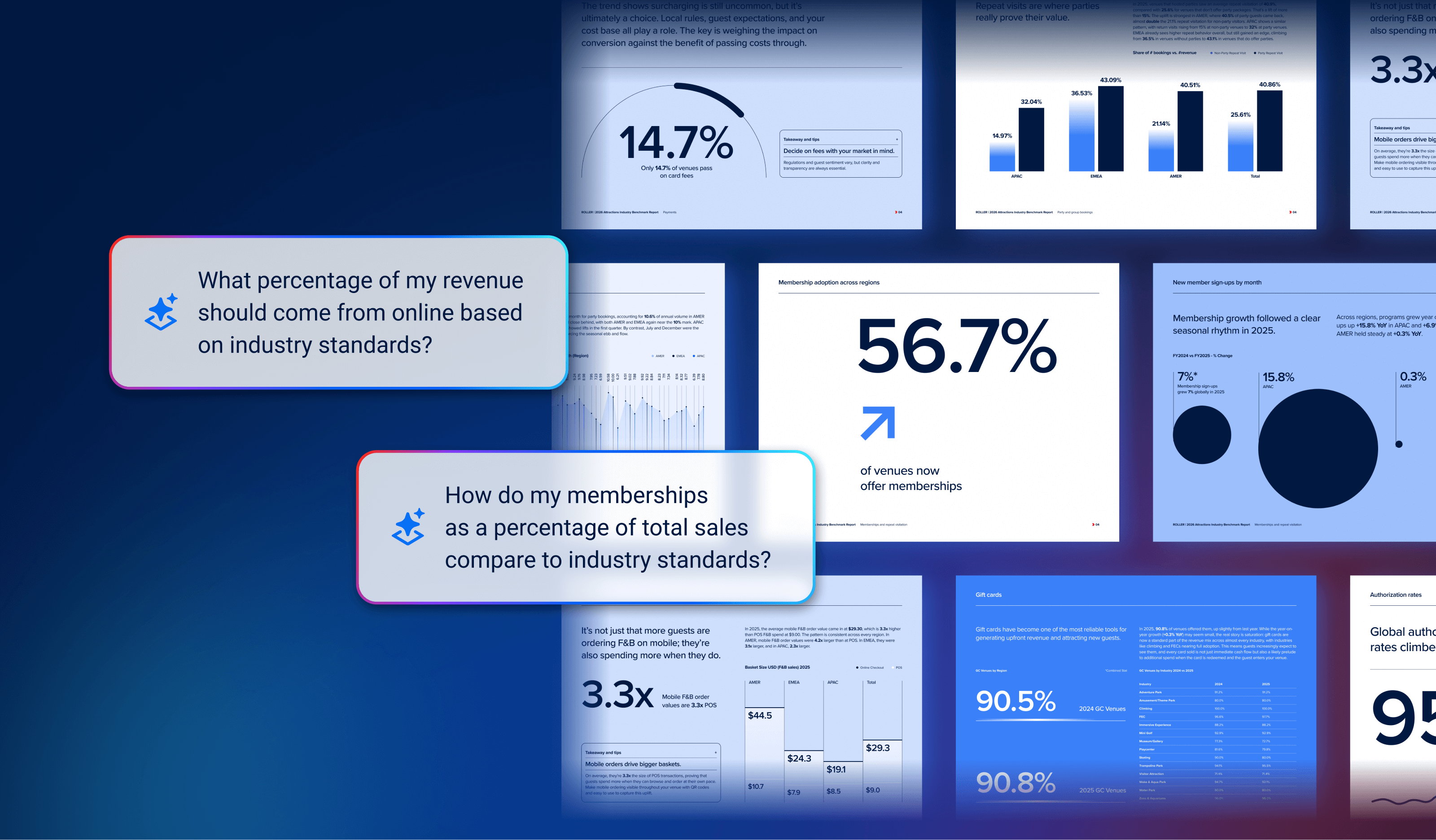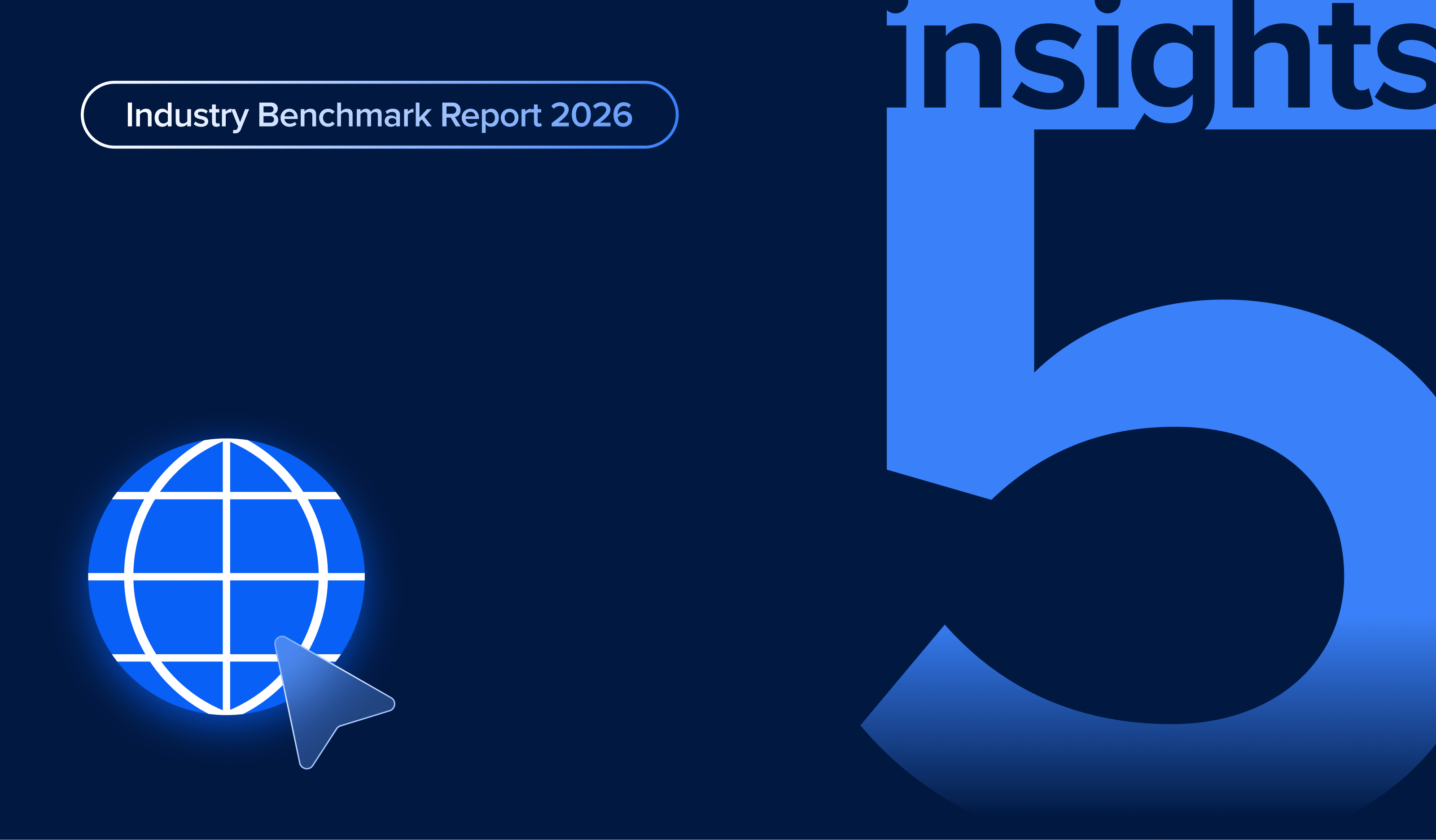Mastering Shift Scheduling: Strategies for Attraction Venues
.png?width=820&name=Mastering%20Shift%20Scheduling_%20Strategies%20for%20Attraction%20Venues_Social(2_1).png)
Introduction to shift planning
The gates of your venue have just opened. As you and your staff welcome the first of the day’s guests, you notice several large groups that you hadn’t anticipated have just arrived. On top of that, one of your employees has called out due to a schedule mix-up. As the queues – and frustration – begin to build, the customers become noticeably annoyed. If you’ve ever found yourself in this situation, then you know just how important it can be to know the ins and outs of venue shift planning.
Key takeaways
- Shift planning aligns workforce schedules with visitor demands, enhancing workflow efficiency.
- It influences operational efficiency, guest satisfaction, and staff morale, impacting financial health.
- Successful shift planning requires flexible scheduling, technology use, and staff preference incorporation.
- Comprehensive planning involves demand forecasting, legal compliance, and employee engagement for optimal operation.
What is shift planning?
Shift planning for attraction venues is a process that involves strategically organizing workforce schedules to meet the demands of visitors. It is not just about assigning tasks; it's about creating a cohesive workflow that maximizes both operational efficiency and guest satisfaction. Here are some of the specifics:- Demand forecasting: This involves an in-depth analysis of past trends, current market conditions, and future projections to predict visitor numbers accurately. Much like capacity planning, forecasting is crucial, especially during peak seasons, holidays, or special events, to ensure the venue is neither understaffed nor overstaffed.
- Skill set consideration: Each role within an attraction venue requires specific skills and qualifications. Effective shift planning means aligning employee skills and roles with the operational needs of different areas within the venue, such as rides, food services, or customer support. This optimizes staff utilization and promotes a higher level of service quality.
- Legal compliance: Navigating the complex web of labor laws and regulations is vital. This includes managing working hours, ensuring adequate breaks, avoiding excessive overtime, and adhering to age restrictions and safety regulations specific to the industry.
- Flexibility and adaptability: Given the unpredictable nature of visitor attendance and unforeseen circumstances, shift planning for attraction venues requires high flexibility. The ability to quickly adapt schedules in response to sudden changes in visitor numbers or staff availability is key to maintaining smooth operations.
- Employee engagement and feedback: Incorporating employee preferences and feedback in the scheduling process can lead to higher job satisfaction and reduced turnover. Engaged employees are more likely to provide exceptional guest experiences.
By considering these diverse elements, venues can create a harmonious and efficient environment that benefits employees and visitors.
Shift planning benefits for attraction venues
Shift planning is a critical component in the smooth operation of attraction venues, impacting cost, guest experience, employee morale, and overall operational efficiency.- Cost control: Labor costs money. Effective shift planning significantly contributes to cost management. By precisely aligning workforce schedules with expected guest turnout, venues can avoid both understaffing, which could lead to lost revenue opportunities, and overstaffing, which unnecessarily inflates labor costs.
- Enhancing guest experience: Keeping the venue adequately staffed during peak times is essential for maintaining service quality. This includes having enough personnel to interact with guests, handle rides, and manage emergencies, ensuring visitors have a pleasant and memorable experience.
- Employee satisfaction: A well-executed shift plan considers employee preferences for work hours where possible, leading to improved job satisfaction. This approach reduces stress and burnout, fostering a more engaged and motivated staff, which can improve the quality of guest interactions.
- Operational efficiency: Effective shift planning allows for quick adjustments in response to real-time changes, ensuring that resources are allocated where needed most.
Shift planning best practices for attraction venues
Shift planning is more than simply jotting someone’s name down on a calendar. It requires diligence and fine-tuning based on your specific venue. To help you along with the process, we’ve compiled these best practices to set you off on the right foot, enhancing the operational efficiency and staff satisfaction at your venue.
Understanding unique industry challenges
- Acknowledge the impact of seasonality and special events on staffing needs.
- Plan for peak periods with increased visitor traffic and quieter off-season times.
- Prepare contingency plans during high-profile events or promotions.
Integrating employee input and preferences
- Encourage staff to share their availability and preferences as soon as possible.
- Create a culture where employees feel their input is valued in the scheduling process.
- While last-minute issues may arise, ensure you have accurate and comprehensive availability data from all team members.
- Balance business needs with employee preferences to increase job satisfaction.
Utilizing technology
- Explore and implement shift planning software tools tailored for the attraction industry.
- Benefit from automated scheduling, demand forecasting, and easy shift swaps.
- Use technology to streamline communication and reduce scheduling errors.
- Use data and analytics from venue management software — like ROLLER — to track peaks and dips in traffic, giving you more precise info on which to base your shift planning.
Adapting to changes
- Develop flexible scheduling practices to accommodate unexpected changes in visitor numbers.
- Train staff to be adaptable and cross-functional to cover various roles as needed.
- Have a system in place for quick response to sudden staffing needs.
Compliance with labor laws and regulations
- Stay updated with local and national labor laws impacting shift lengths, breaks, and overtime.
- Implement practices that ensure compliance to avoid legal issues and ensure staff welfare.
Use planning templates
- Implement templates for systematic and consistent shift planning.
- Templates can streamline the scheduling process, ensuring all necessary factors are considered.
- You may need different templates for different areas of your venue, such as back-of-house versus front-of-house roles.
Avoid on-call scheduling
- On-call scheduling can lead to employee dissatisfaction, as the uncertainty around such shifts can lead to a poor work/life balance.
- More predictable and stable scheduling can give employees a sense of expectation, leading to fewer scheduling problems.
Streamlining shift communication
- Schedule shifts well in advance to provide stability and predictability. This approach helps in managing employee expectations and operational planning.
- Employees should be given clear, consistent communication regarding shift schedules.
- Implementing effective communication channels can reduce confusion and improve staff morale.
- If a scheduling issue arises, have a clear process in place for resolution. Don’t simply leave it to the employee to figure out, as this can lead to confusion and possible gaps in shift coverage.
- Avoid making last-minute changes to the schedule without advance notice.
Effective shift planning demands a thorough understanding of your industry's unique needs, a commitment to leveraging technology, and a dedication to the well-being and preferences of the staff. By adopting these best practices, venues can balance operational demands and employee satisfaction.
How to implement shift planning in attraction venues
Emphasizing flexible scheduling, leveraging advanced scheduling software, and regularly updating plans based on operational feedback is key to effective shift planning. However, knowing how to refine your shift planning methods is crucial. Look at these steps to putting the best scheduling practices into place.
Step 1. Assess current staffing practices
Start by evaluating your current scheduling methods. Identify areas of strength and those needing improvement, such as understaffing during peak periods or overstaffing during off-peak times.
Step 2. Define your objectives
Clearly outline what you aim to achieve with a new shift planning strategy. This may include reducing labor costs, improving guest satisfaction, or enhancing employee work-life balance.
Step 3. Analyze visitor traffic patterns
Gather data on visitor attendance, including peak times, seasons, and special event days. This will help in predicting future staffing needs more accurately.
Step 4. Employee skill assessment
Review the skills and qualifications of your workforce. Ensure that your shift plan accommodates the specific needs of different venue areas, such as rides, food services, or guest services. Are some employees able to cover other areas should the need arise?
Step 5. Create a flexible scheduling model
Develop a scheduling model that allows for flexibility. This should account for sudden changes in visitor numbers and employee availability.
Step 6. Incorporate employee input
Involve your staff in the scheduling process. Gather their preferences and feedback to create a more balanced and employee-friendly schedule.
Step 7. Implement and monitor
Roll out the new scheduling system and monitor its impact. Regularly review and adjust the schedule to ensure it meets both business needs and employee satisfaction.
Frequently asked questions
Why is shift planning important for attraction venues?
Shift planning ensures optimal staffing for better guest experiences, helps manage labor costs efficiently, and boosts staff morale by considering their preferences, which is crucial in a customer-focused industry.
How do I assess my current staffing practices?
Reviewing current schedules, assessing staffing during different periods, and soliciting feedback from employees and guests can provide valuable insights into the effectiveness of your current practices.
What factors should I consider when shift planning?
To ensure you employ the best shift-planning practices, you’ll want to look closely at your venue’s historical data to determine anticipated traffic and peak and off-season periods. You’ll also want to consider staff availability and overlap to ensure that key roles are filled at all times, including for breaks and possible no-shows. Finally, make sure to get a sense of what your staff prefers, as working with them can help to reduce turnover and lead to more engaged employees.
The importance of shift planning to your venue
Shift planning is not just about filling in a schedule; it's about aligning staff resources to fluctuating visitor demands for a seamless operation. Effective shift planning directly impacts guest satisfaction, staff morale, and the overall financial health of the venue. Proper shift planning can help avoid hangups when your gates next open, creating a harmonious and productive work environment for staff and a great experience for guests.
Speak to the ROLLER team today to streamline operations at your attraction venue.
Related articles

.png)
Payment Trends That Will Shape 2026: Insights from the Attractions Industry Benchmark Report

How to Optimize Your Online Checkout: 5 Key Insights from the 2026 Benchmark Report
Enhance your guest experience
Get free education, tips and inspiration to help you run a successful venue.